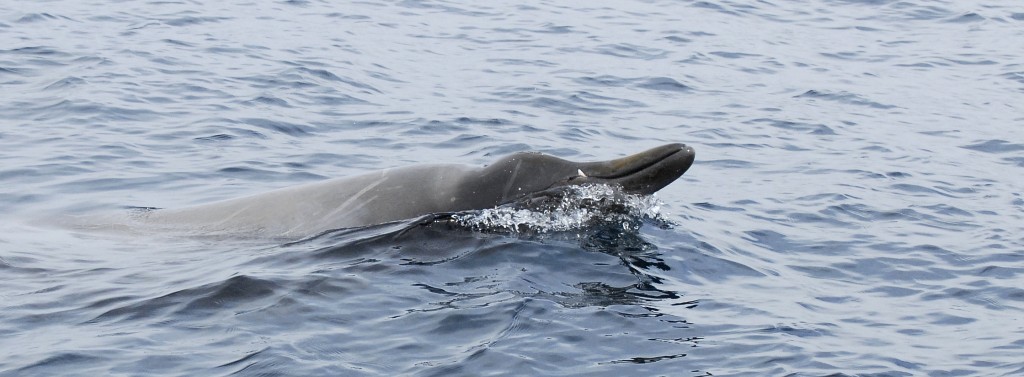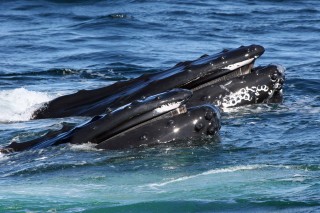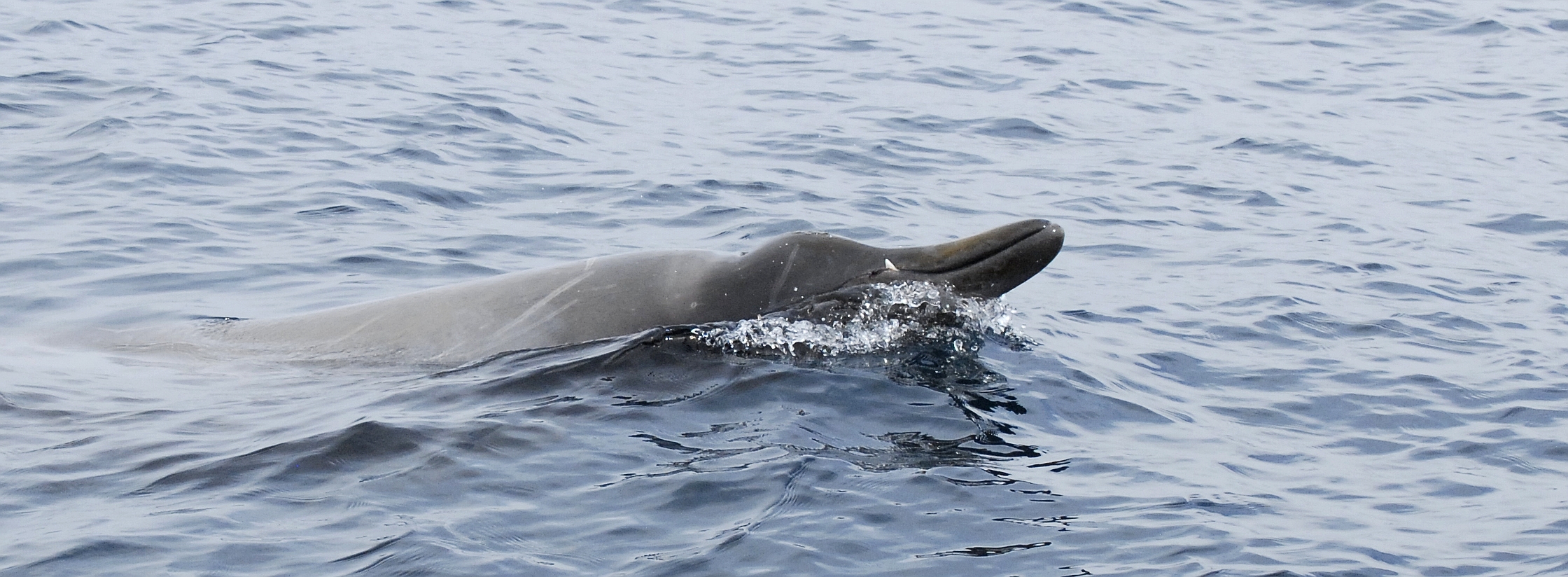
September 16, 2015
Deep Water Whales, Part 1
- as seen by -
 Ricardo Antunes
Ricardo Antunes
Beaked whales (such as the Sowerby’s beaked whale in this photo) are extreme divers, swimming to depths in excess of 3,000 feet to prey mainly on deep water squid. This group of about 20 species of toothed whales is named for the shape of their elongated snouts. Male beaked whales can be distinguished from females by the teeth protruding from their jaw, which the females lack. These small whales are usually found in steep-sided valleys cut into the sea floor called submarine canyons that are located around the world, including New York’s Hudson Canyon.
Submarine canyons significantly contribute to the mixing of nutrient-rich deep waters creating good living conditions for a wide array of marine life, which likely supports the whales’ food. Rare sponges, vivid anemones, and deep-sea corals can be found in these canyons, as well as large communities of fish and crustaceans.
The same biological richness attracts humans to submarine canyons, and commercial and recreational fishermen often target these areas. Until recently, fishing activity exploited shallower waters, but technological developments now allow fishermen to trawl along the deep bottoms of the canyons. These techniques can quickly destroy the rich gardens of corals in these areas, some of which have been growing for hundreds of years.
I have sighted beaked whales on several occasions, almost by accident, while doing research on other whale species. I always felt privileged to get a glimpse of these cetaceans, as they are very boat-shy. Because of their rarity, and because they live so far offshore, most people are unfamiliar with beaked whales. I feel that it is important for people to know about the threats faced by these deep water whales. I hope that sharing my photos and stories about whales will help to protect them.
Read Deep Water Whales, Part 2.
Nikon D200




Leave a Comment